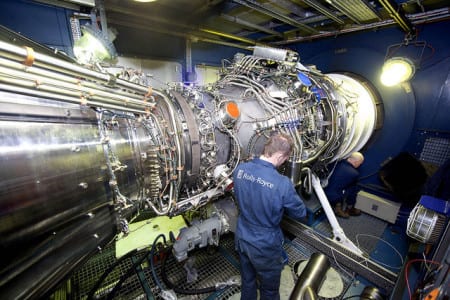Editor’s note: Zachary Farrar has worked in field service for nearly a decade and is currently national service supervisor for an industrial equipment manufacturer. Below, Farrar explains how he steered his team to offer proactive service — and how he worked with sales and marketing colleagues to sell these new services.
Customers love uptime — those periods when the equipment is running properly — and you’ll rarely hear from them when things are moving smoothly. But as soon as a machine let’s loose a loud pop, bang and whiz, you’ll get a frantic call asking why your company’s equipment is so bad.
Too often I meet end users who follow the “run it ’till it breaks” maintenance plan. Their in-house mechanics are firemen who must respond to the latest emergency situation, while the OEM service provider is the expensive cavalry called to save the day. The result? Expensive operations and periods of zero production from equipment. It’s any service manager’s nightmare.
That’s reactive service, and it’s my least favorite situations to deal with as a senior supervisor. Downtime is costly and ineffectual for everyone involved — and for service leaders, it means dealing with stressed technicians and angry customers.
Making the Switch
No fun, right? Nope. That’s why, when I took over my service department, my first goal was to transition from reactive to proactive service. I made the switch by following several steps, including:
- Rethink and reassign job responsibilities: This can increase employees’ ability to perform other tasks. For example, I now have an inside sales supervisor to handle all spare part and kit sales. Separating that from the service supervisor position has allowed me to better focus on service strategy.
- Share knowledge: Ensure techs and engineers alike are properly equipped with the tools and knowledge base access that’s necessary to perform their duties, at the expected pace. What’s more, a lack of accessibility increases reaction times — and being ahead of the curve is how my team stays proactive.
- Set proper expectations: Change the goals and objectives of field service techs. For example, making first-time fix rates (and no call-backs) a weighted KPI for technicians can greatly increase their productivity and attentiveness.
- Work closely with sales and marketing: Work with non-field service groups like sales and marketing to ensure that they are offering customers what they truly need, and transmitting it internally to avoid company-paid change order and punch list items.
- On-site training: Transitioning production staff in and out of the field once they’re competent enough to serve the end user greatly increases their awareness of quality requirements.
- Quality control: Ensure quality from the very beginning so the people who build the equipment also understand the consequences of their attention (or inattention) to quality.
By eliminating downtime and reducing angry customers, not only do we prosper, but our customers do as well, whether through reduced labor rates through contracts or guaranteed work for the upcoming year.
A Moneymaker for Customers, Service Providers
 Do it well, and technicians can constantly sell parts in need of replacement while they’re onsite, while managers monitor and update spare parts inventories in real-time. The result is a better relationship with the customer and lower overtime costs that come from technicians who are required, by an SLA or a customer’s demands, to pull all-nighters to get critical equipment up and running.
Do it well, and technicians can constantly sell parts in need of replacement while they’re onsite, while managers monitor and update spare parts inventories in real-time. The result is a better relationship with the customer and lower overtime costs that come from technicians who are required, by an SLA or a customer’s demands, to pull all-nighters to get critical equipment up and running.
Take it from the big guys.
GE, Toshiba, Siemens and Rolls-Royce make equipment with demanding uptime requirements. This kind of equipment can cost companies millions if it goes down for a single day. As a result, manufacturers like GE often keep field service engineers on site to maintain the equipment and guarantee its uptime. Just think: How great would it be to have OEM, or even third-party technicians, in your facility every week to maintain a product?
Sell Customers on the Benefits
When selling proactive maintenance services, it’s important to give customers a few key factors for why the investment is worthwhile. Guaranteeing equipment uptime at a low cost can be a strong argument, especially when customers consider the alternative: Overtime and premium labor chargers add up; contractual breaks are expensive and slash productivity; and rush fees for critical parts from manufacturers get expensive quickly.


Share this: